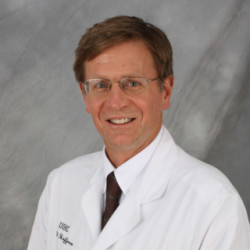The Salivary Gland committee of the AAO-HNS met during the morning of Monday, October 6, 2023, in Nashville to conclude a year-long effort that included multiple Zoom meetings and emails directing an effort to refine the language used in ultrasound analysis. The first of a targeted four-part series is now a complete manuscript addressing the submandibular gland. The second part addresses the parotid gland and is under similar preparation with plans to present at next year’s AAO–HNSF meeting. Co-authors include international specialists from other disciplines supplementing work done through the Salivary Gland Committee.
Analysis of outcomes from salivary gland treatment employing ultrasound requires the use of reproducible imaging techniques. Treatments currently under study range from botulinum toxin injection to medical therapy for autoimmune sialadenitis to surgical treatment to relieve duct obstruction and include investigative work such as salivary duct infusion (drug/gene therapy) as well as parenchymal injection (stem cell injection) to address xerostomia.
Radiomics is broadly defined as a method to extract information from medical images and has received intense scrutiny with CT and MRI scans. Ultrasound radiomics is a developing field with acknowledged limitations due to inconsistency in image acquisition and difficulties in calibrating quantitative methods.
Subjective grading of salivary ultrasound images through semi-quantitative classification schemes has been supplemented by quantitative assessment employing shear wave elastography to further refine the analysis. Assessments by both approaches generally lack consistency in identifying specific anatomic regions (subsites) within the salivary glands and rarely report differences between regions in the same gland.
Shear wave elastography is a quantitative ultrasound method to determine the velocity of tissue displacement resulting from a secondary “push pulse” produced by the ultrasound probe. The speed of tissue displacement (shear wave) correlates with the tissue stiffness or fibrosis from the selected “regions of interest” evaluated. Identifying the specific “regions of interest” (subsites) assessed within the salivary glands is needed to provide consistency in these shear wave measurements.
The emphasis of this report is to address the standardization of salivary ultrasound nomenclature and measurement technique with additional focus on the reporting to include specific subsites within the gland. Recommendations are designed to provide consistency in salivary gland imaging intended for clinical and research applications within the evolving field of ultrasound radiomics.
Through a critical literature review and presentation of case examples, the Salivary Gland committee of the AAO-HNS provides a proposal for standardized salivary gland assessment and reporting, with this initial report addressing the submandibular gland.
Image by GoodStudio / Shutterstock







